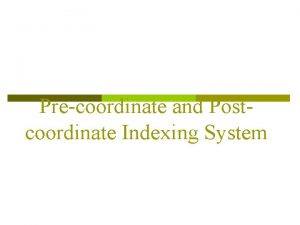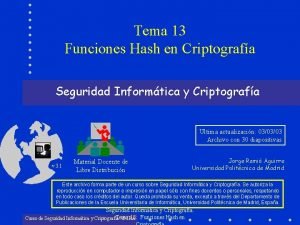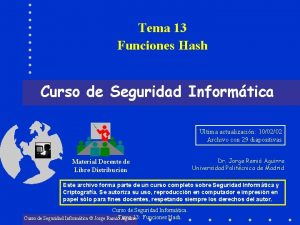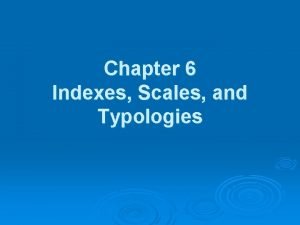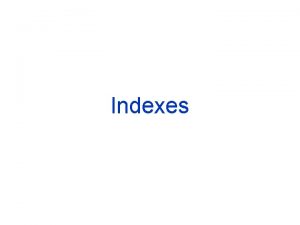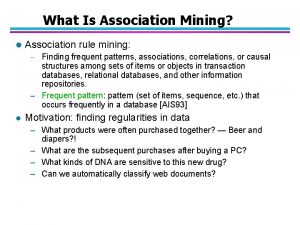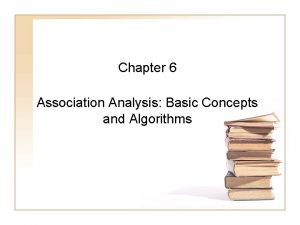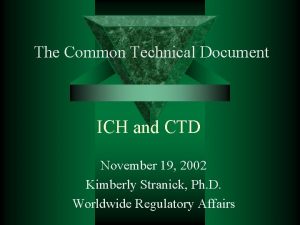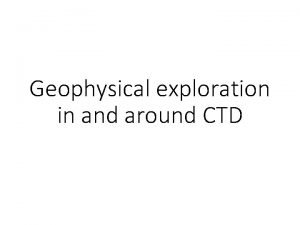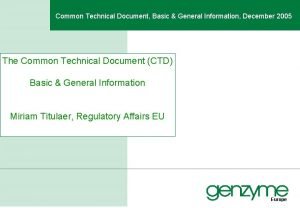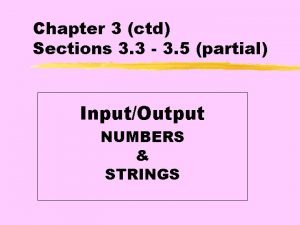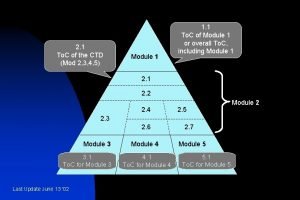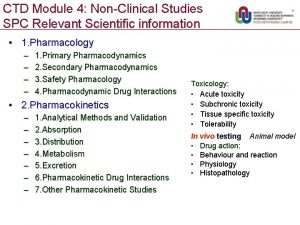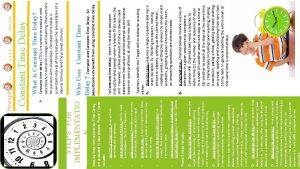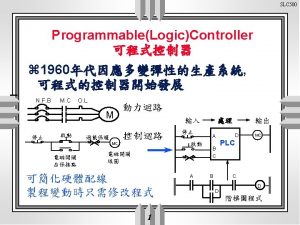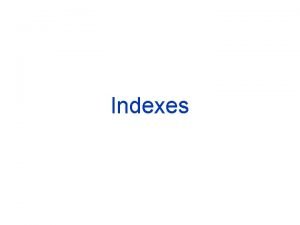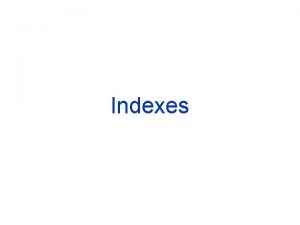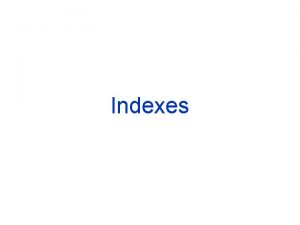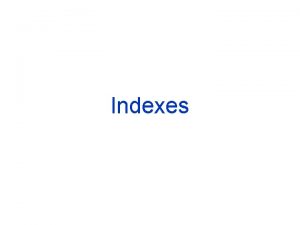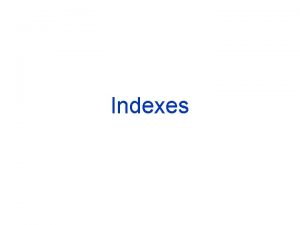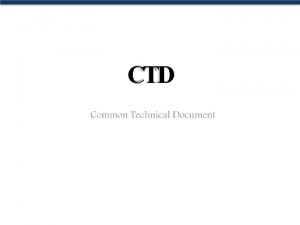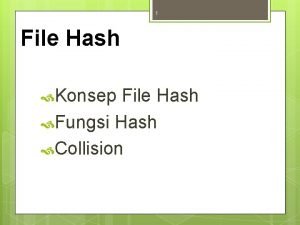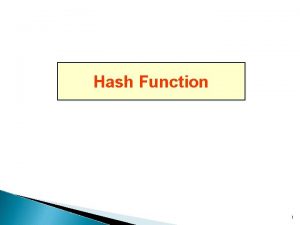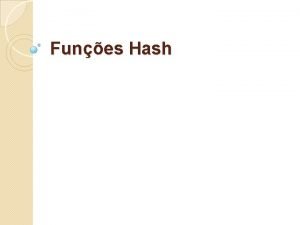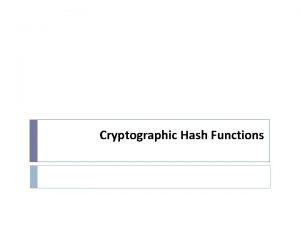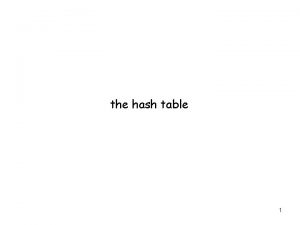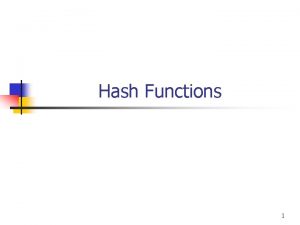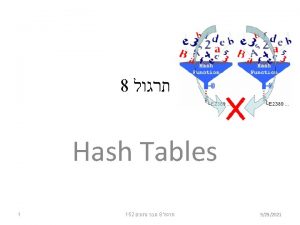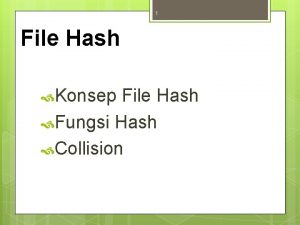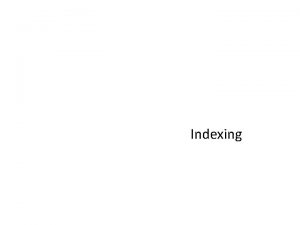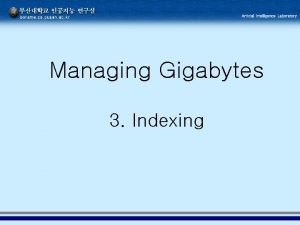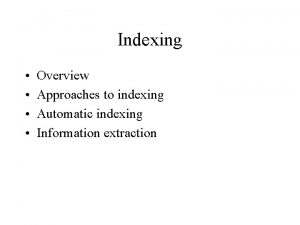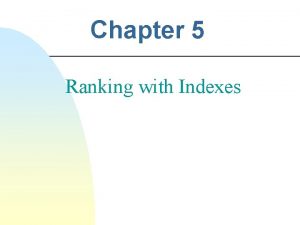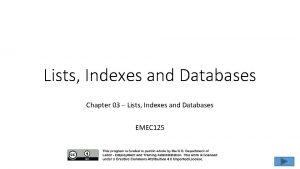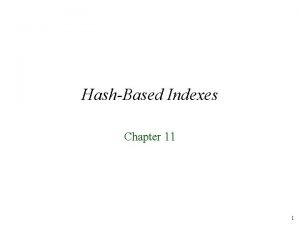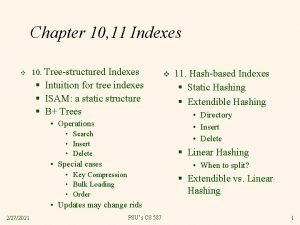Hash Indexing ctd and Using Indexes RG Chapter






























- Slides: 30

Hash Indexing (ctd. ) and Using Indexes R&G Chapter 11, 14 (slides adapted from content by J. Gehrke, J. Shanmugasundaram, and/or C. Koch) 1

Announcements Homework 3 due tonight No homework 4 assigned this week (Project 1 due 1 week from Monday) Dr. Chomicki will be substituting Monday 2

Recap: Hash Indexes • • • As with trees: request a key k and get record(s) or record id(s) with k. Hash-based indexes support equality lookups • • … in constant time (vs log(n) for tree) … but don’t support range lookups Static vs Dynamic Hashing • Tradeoffs similar to ISAM vs B+Tree 3

Recap: Static Hashing Primary Bucket Pages Overflow Pages (Linked List) (Contiguous) 0 1 2 k h(k) % N . . . N-1 4 . . .

• • Recap: Extendible Hashing Situation: A bucket becomes full • • Solution: Double the number of buckets! Expensive! (N reads, 2 N writes) Idea: Add one level of indirection • • • A directory of pointers to (noncontiguous) bucket pages. Doubling just the directory is much cheaper. Can we double only the directory? 5

Extendible Hashing gd = 3 0 00 0 01 0 10 0 11 100 101 110 111 6 4, 12, 32, 16 A (ld=3) 1, 5, 21, 13 B (ld=2) 10 C (ld=2) 15, 7, 19 D (ld=2) 4, 12, 20 A 2 (ld=3)

Recap: Extendible Hashing • • • Global depth of directory • Upper bound on # of bits required to determine the bucket of an entry. Local depth of a bucket • Exact # of bits required to determine if an entry belongs in this bucket. Why use least significant bits (vs MSB)? 7

Any Questions? 8 Image copyright: Paramount Pictures

Linear Hashing • • • A directory page adds 1 page lookup overhead. Can we do similar splits without indirection? Linear Hashing based on similar principle. • • • Start with the last n bits of each hash fn. When you decide to split, start using n+1 bits. Key difference: Split incrementally • • Part of the hash table uses n bits, rest uses n+1 Each round increase n by one (1 round = 1 full split) 9

Linear Hashing Level = 3 (23 = 8 Entries) Buckets already split this round Next = 2 bucket to be split ‘Split image’ buckets created this round 0000 0001 010 011 100 101 110 111 1000 1001 10 Buckets Existing at the start of this round

Linear Hashing: Lookups Level = 3 (2 = 8 Entries) 3 Next = 2 Lookup K h(k) % 2 Level = 4 (100) Next ≤ 4 0000 0001 010 011 100 101 110 111 1000 1001 Use entry 4 11 overflow

Linear Hashing: Lookups Level = 3 (2 = 8 Entries) 3 Next = 2 Lookup K h(k) % 2 Level = 1 (001) 1 < Next Use entry h(k) % 2(Level+1) 1 (1001) or 9 (1001) 0000 0001 010 011 100 101 110 111 1000 1001 12 overflow

Linear Hashing: Splitting Level = 3 (2 = 8 Entries) 3 Next = 2 Split Next Increment Next Partition on bit Level 0000 0001 1010 010 011 100 101 110 111 1000 1001 13 overflow

Any Questions? 14 Image copyright: Paramount Pictures

Linear Hashing • When to we split? • It depends on the application. • Whenever Next bucket is full • After random insertions • After a fixed number of insertions (size) • Background process splits as needed. 15

vsactually Linear • Extendible The two algorithms are quite similar. • • • Keep some data pages un-split • Minimize repartitioning required to split. Use least-significant bits to ensure that new buckets will be appended to the end. Linear allocates buckets in sequential order. • 16 Is this helpful? When/how?

Any Questions? 17 Image copyright: Paramount Pictures

Consistent Hashing (‘Chord: A Scalable Peer-to-peer…’, Stoica et al. ) • Insight: Make split/merge faster by making bin boundaries nondeterministic. • Used mostly in distributed data-stores • (Amazon, Facebook, …) • Minimal applications to file-based storage. 18

Consistent Hashing 32 2 -1 0 19

Consistent Hashing Modular Arithmetic (mod 232) 32 2 -1 0 29 2 -1 230 -1 (232 -1)+1 = 0 Numbers form a ‘Ring’ 31 2 -1 20

Consistent Hashing B Assign each bucket a random point on the ring Hash Range of A Each bucket contains values that hash to ring positions between its point and its predecessor A Hash Range of B 21

Consistent Hashing B B A C C A 22

Consistent Hashing • • • Splits/Merges are cheap. • • At most 2 buckets are affected. No need for page duplication. Mapping hash value to bucket is expensive. • Need to have a lookup mechanism/directory. Chord: Decentralized lookup mechanism. 23

Any Questions? 24 Image copyright: Paramount Pictures

Summary • Size of a hash table is important • Too big: Wasted Space/IOs • Too small: Collisions/Overflow Pages • Dynamic hashing requires carefully managing how data is repartitioned. 25

• • Index Keys Thus far, we’ve discussed single-value keys. We can also use multi-valued keys <A, B, C, …> • • Equality Searches: A, B, C, … must all match Range Searches • • • First Compare ‘A’s. If ‘A’s equal, compare ‘B’s If ‘A’s and ‘B’s equal, compare ‘C’s, … 26

Access Paths • An access path is a method of retrieving tuples. • • File Scan, Scan of an Index on a Matching σ A Tree-Index matches (a conjunction of) terms that involve a prefix of the search key • Does a Tree-Index on <A, B, C> match: • • • A = 5? A = 5 AND B > 6? A > 5 AND B > 6? A < 5 AND A > 3? B > 6? 27

Access Paths • An access path is a method of retrieving tuples. • • File Scan, Scan of an Index on a Matching σ A Hash Index Matches (a conjunction of) terms that have an equality for every attribute in the index. • Does a Hash-Index on <A, B, C> match: • • A = 5? A = 5 AND B = 6? A < 5 AND B = 6 AND C = 4? A = 5 AND B = 6 AND C = 4? 28

Any Questions? 29 Image copyright: Paramount Pictures

• Access Path Cost General Strategy: Find the most selective access path to the data • • • The index, file, or combination of both that requires the fewest IOs to access the data. Selection terms that match the index reduce the number of tuples retrieved. The remaining terms discard tuples, but do not affect the number of pages fetched. 30
 Pre-coordinate indexing
Pre-coordinate indexing Manual indexing vs automatic indexing
Manual indexing vs automatic indexing Tema de hash hash
Tema de hash hash Algoritmo abcde
Algoritmo abcde Scale scores convey more information than index scores.
Scale scores convey more information than index scores. What is a logical view of data?
What is a logical view of data? 110 miller indices
110 miller indices Stoxx blue chip
Stoxx blue chip What is security market index
What is security market index Indexes
Indexes Real number
Real number Productivity index
Productivity index Npv profile calculator
Npv profile calculator Sys index
Sys index Security market indicator series
Security market indicator series What is association rules
What is association rules Compact representation of frequent itemsets
Compact representation of frequent itemsets Ctd sections
Ctd sections Ctd
Ctd Ctd module 3
Ctd module 3 Ctd modules
Ctd modules Ctd
Ctd Ctd sections
Ctd sections Ctd module 5 table of contents
Ctd module 5 table of contents Ctd modules
Ctd modules Module 3 ctd table contents
Module 3 ctd table contents Ctd module 4
Ctd module 4 Ctd modules
Ctd modules Constant time delay
Constant time delay Prophet ctd
Prophet ctd Rslogix 500 data types
Rslogix 500 data types
